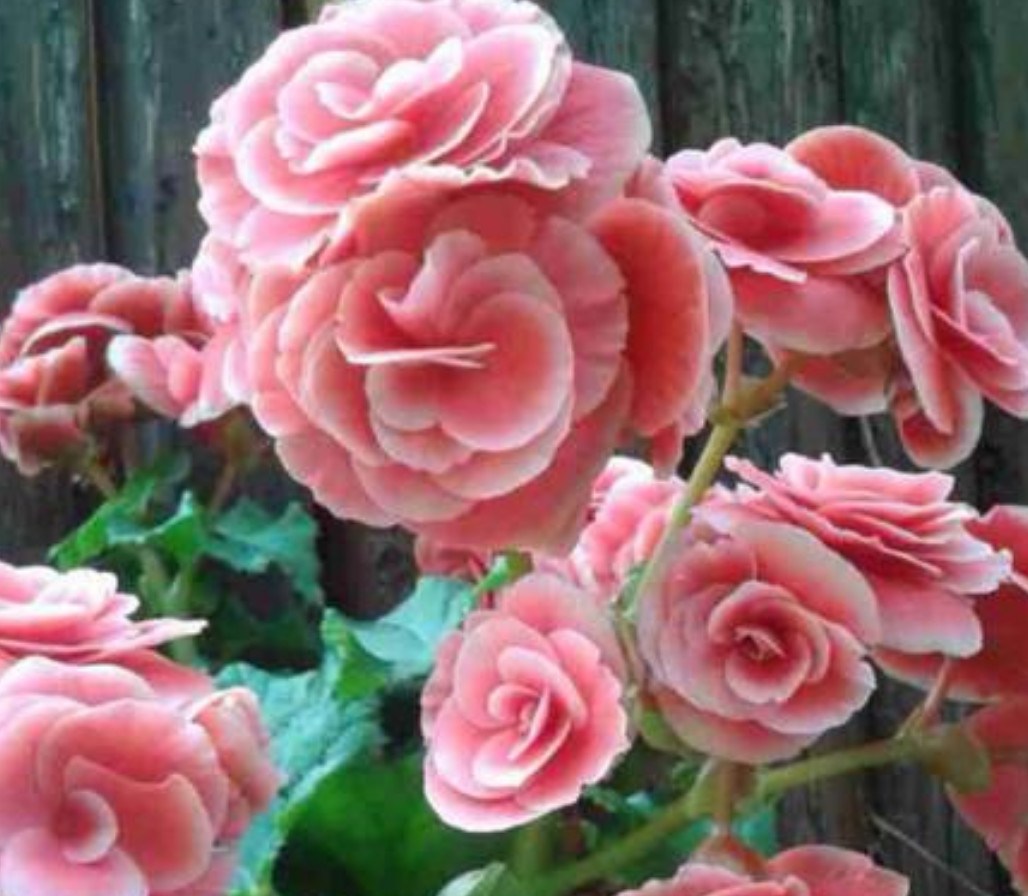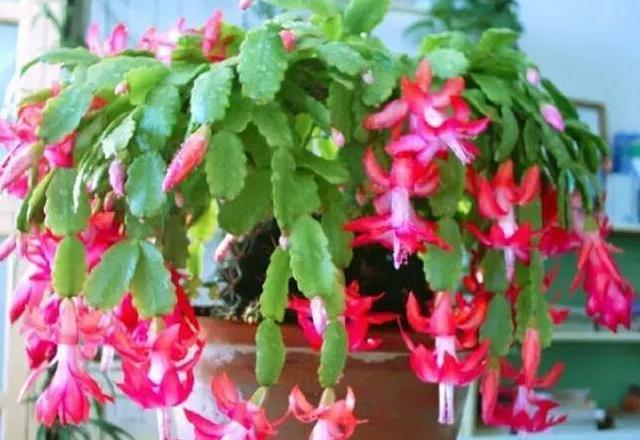Raise Rieger Begonia in autumn and winter. Beautiful plant shape, high ornamental value, high flowering until your visual fatigue.

The hot summer has passed, and many flower friends' flowers wilt and die after a summer high temperature baptism, or their growth is not very good. The cool autumn has come. I recommend a kind of flower suitable for breeding in autumn and winter, that is Rieger Begonia. Rieger Begonia is a typical greenhouse flower with long flowering period, rich color, green branches and leaves, plump plant type, and no less than rose, which is the first choice for beautifying the house in winter and spring.
The flowering period of Rieger Begonia is particularly long, which can last from December to April of the following year. Properly cultivated, it can bloom from winter to early summer. After a short dormancy, it will blossom again in late autumn. Some flower friends praise their own Rigg Begonia, which has not been dormant in summer for half a year or so, joking that they are a little visual tired when they look at its flowering. It can be seen that Rieger Begonia blossoms for a long time.
Generally speaking, the Rieger crabapple we buy from the flower market have full heads of buds and flowers, and the plant shape is also very beautiful. If you want Rieger Begonia to have a long flowering period and bright colors, it should meet all the conditions needed for its growth.
Rieger crabapple likes loose, fertile, well-drained soil, coconut bran, peat, vermiculite or perlite, carbonized bark and other mixed soil can meet its growth needs. Rieger crabapple is a perennial tuber herbaceous flower, its underground has brown lignified irregular bulbs, so watering Rieger crabapple must be careful not to have stagnant water in the basin. Many flower lovers can not raise Rieger crabapple well, most of the reasons are watering. Usually maintain in addition to dry and re-irrigated in the low temperature period in winter, the basin soil can be kept slightly wet in other seasons, must not be watered too frequently to prevent root rot.
Rieger crabapple likes the moist air environment, in the case of good ventilation, can be used to spray plants in a better atomization state to maintain air humidity. Spray time as far as possible in a well-ventilated state during the day, let the leaves absorb water and quickly volatilize the excess water to prevent stems and leaves from rotting. At the same time, avoid flowers when spraying to prevent premature withering. What needs to be reminded is that in the low temperature period in winter, once the leaves are flooded and the air circulation is no longer good, it is easy to induce grey mold, which is the most easily acquired by Rieger Begonia. Water spots appear in the leaves at the initial stage, but in the later stage, the spots gradually expand and infect the leaf center and stem. It is covered with gray mildew, causing rot. If Botrytis cinerea occurs, it is recommended to cut off the diseased leaves immediately and spray the leaves and soil with Botrytis cinerea or mancozeb in sunny weather, once every 7 days for 2 or 3 times in a row.
Rieger crabapple likes a warm and semi-overcast environment and sufficient scattered light. The most suitable temperature for its growth is 18-22 ℃. In winter, the room temperature should be kept above 15 ℃, otherwise it will cause falling flowers and buds. The most suitable position for breeding in autumn and winter is a well-ventilated balcony or bedroom windowsill. It can be properly exposed to the sun when the sun is not strong in winter.
If you want Rieger Begonia to have a long flowering period, there should be adequate fertilizer supplements throughout the growth process. At flowering stage, the intake of nitrogen fertilizer should be reduced as much as possible, and the application of phosphorus and potassium fertilizer can not only promote the rapid development of flower buds, but also increase the ability of disease resistance and cold resistance of plants. 0.1% potassium dihydrogen phosphate can be added to the water during watering, or you can use your own mature organic liquid fertilizer such as alum fertilizer to fill the roots of the plant to ensure an adequate energy supply during the flowering period.
- Prev

These rich flowers are raised in a pot at home. They grow strong and mean good.
Sometimes raise flowers ah, really can not be casually raised, raise some lucky prosperous luck, in order to make the family's wealth constantly, good luck again and again, such as: fortune tree, money tree, clivia, orchids, etc., do not be too distressed money, after all, bought these flowers,...
- Next

Raising this kind of flower in August and September can make 200 flower thieves look good in one pot.
When it comes to potted flowers, if you keep them at home, you should naturally raise flowers that are both good-looking and easy to manage. Now the weather is slightly cool, and after the hot summer, it is the peak growing season for all kinds of flowers and plants. And in August and September,.
Related
- Wuhan Hospital Iron Tree Blooming Result Was Instantly Frightened by the Gardener Master
- Which variety of camellia is the most fragrant and best? Which one do you like best?
- What is the small blue coat, the breeding methods and matters needing attention of the succulent plant
- Dormancy time and maintenance management of succulent plants during dormancy
- Minas succulent how to raise, Minas succulent plant pictures
- What are the varieties of winter succulent plants
- How to raise succulent plants in twelve rolls? let's take a look at some experience of breeding twelve rolls.
- Attention should be paid to water control for succulent plants during dormant period (winter and summer)
- Watering experience of twelve rolls of succulent plants
- Techniques for fertilizing succulent plants. An article will let you know how to fertilize succulent plants.

